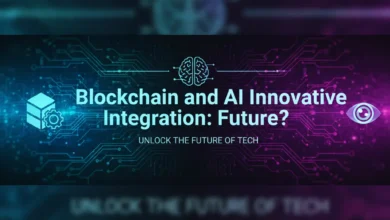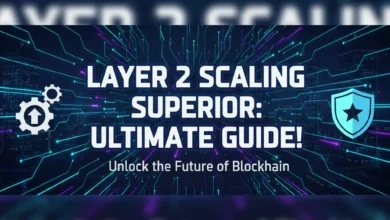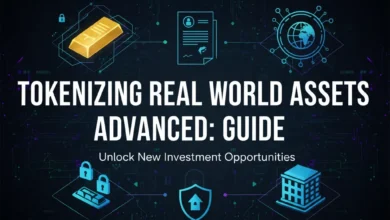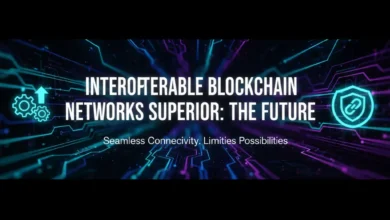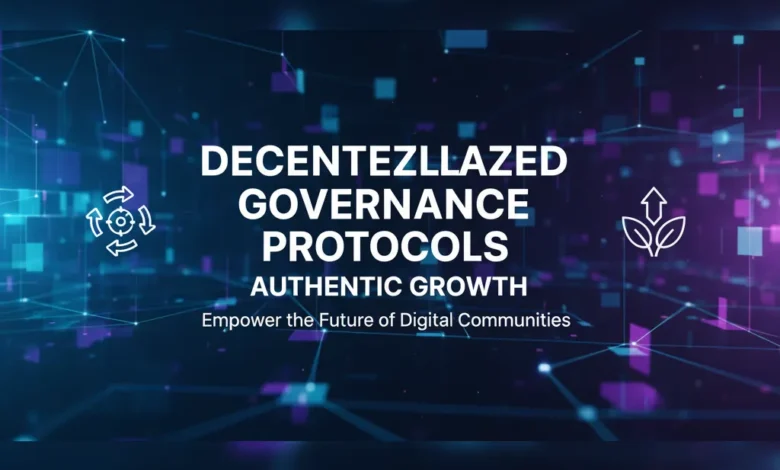
Decentralized governance protocols Authentic Growth, Explore the surge in decentralized governance protocols and discover how they’re empowering communities,, decentralized governance protocols Authentic Growth, Explore the surge in decentralized governance protocols plus discover how they’re empowering communities, fostering transparency, plus redefining decision-making processes within the rapidly evolving Web3 landscape.
Decentralized governance protocols: A Paradigm Shift
The rise of decentralized governance protocols represents a fundamental shift in how organizations plus communities operate. Traditionally, centralized entities held the reins of power, dictating policies plus making decisions with limited input from stakeholders. Decentralized governance protocols, however, aim to distribute power more equitably, enabling community members to actively participate in shaping the future of the projects they are invested in. This shift is particularly relevant in the context of Decentralized Autonomous Organizations (DAOs) plus other Web3 initiatives, where community ownership plus participation are core tenets.
DAO Governance Models: Architecting Decentralized Decision-Making
DAO governance models are at the heart of decentralized decision-making. Several prominent models have emerged, each with its own strengths plus weaknesses. Token-based governance is perhaps the most common, where token holders can propose plus vote on proposals proportional to their token holdings. This model incentivizes active participation plus aligns decision-making with the interests of the community. However, it can also be susceptible to plutocracy, where wealthier participants wield disproportionate influence.
Another approach involves reputation-based systems, where individuals gain voting power based on their contributions plus engagement within the community. This model rewards active participation plus fosters a sense of shared ownership, still it can be challenging to implement fairly plus transparently. Quadratic voting is a more sophisticated mechanism that allows voters to express the intensity of their preferences, mitigating the potential for manipulation by whales plus ensuring that the majority sentiment is reflected in the outcome. Each DAO must carefully evaluate its specific needs plus choose a governance model that aligns with its values plus objectives.
Blockchain Voting Systems: Securing Trust plus Transparency
Blockchain voting systems provide the infrastructure for secure plus transparent on-chain voting. By leveraging the immutability plus auditability of blockchain tech, these systems ensure that votes are recorded accurately plus cannot be tampered with. Smart contracts are often used to automate the voting process, ensuring that votes are counted fairly plus that outcomes are enforced automatically. Several blockchain platforms offer dedicated voting tools plus libraries, making it easier for DAOs to implement robust plus secure voting systems.
However, building secure plus reliable blockchain voting systems requires careful attention to detail. It is essential to employ rigorous security audits plus implement safeguards against potential vulnerabilities such as Sybil attacks plus voter fraud. Furthermore, usability is a key consideration, as complex voting interfaces can deter participation plus undermine the effectiveness of the governance process.
On-chain Governance Tools: Empowering Community Participation
A wide range of on-chain governance tools has emerged to facilitate community participation plus streamline the governance process. These tools provide features such as proposal creation, discussion forums, voting interfaces, plus analytics dashboards. They make it easier for community members to stay informed, engage in discussions, plus participate in decision-making. Some platforms offer comprehensive suites of governance tools, while others focus on specific aspects of the governance process.
The availability of user-friendly plus accessible governance tools is crucial for driving governance participation. Tools should be intuitive to leverage, well-documented, plus compatible with various devices plus platforms. Furthermore, they should be designed to promote inclusivity plus ensure that all community members, regardless of their technical expertise, can participate meaningfully in the governance process.
Web3 Community Governance: Fostering Collaboration plus Consensus
Web3 community governance extends beyond technical mechanisms plus encompasses the broader principles of collaboration, transparency, plus consensus-building. Effective governance requires a culture of open communication, constructive dialogue, plus mutual respect. It also necessitates clear guidelines for conflict resolution plus a commitment to upholding the values plus principles of the community.
Building a powerful plus engaged community is essential for successful decentralized governance. This involves fostering a sense of shared ownership, encouraging active participation, plus recognizing the contributions of community members. It also requires addressing issues of diversity plus inclusion to ensure that all voices are heard plus valued. By cultivating a vibrant plus collaborative community, DAOs can unlock the full potential of decentralized governance plus drive innovation plus growth.
Token Governance: Balancing Power plus Incentives
Token governance, where token holders wield voting power, is a powerful mechanism for aligning incentives plus driving participation. However, it is crucial to carefully design the token distribution plus governance mechanisms to prevent undue concentration of power. Strategies such as vesting schedules, multi-sig wallets, plus quadratic voting can aid to mitigate the risks of plutocracy plus ensure that decision-making remains decentralized plus equitable.
Furthermore, it is essential to consider the potential for conflicts of interest plus implement mechanisms to address them. Token holders may have competing priorities, plus it is essential to establish clear guidelines for resolving disputes plus ensuring that decisions are made in the best interests of the community as a whole. Transparency plus accountability are key to maintaining trust plus fostering a healthy governance ecosystem.
Governance Participation: Overcoming Barriers to Entry
Boosting governance participation is a persistent challenge for many DAOs. Low participation rates can undermine the legitimacy plus effectiveness of the governance process. Several factors contribute to this challenge, including the complexity of governance mechanisms, the lack of awareness about governance processes, plus the time commitment required to participate actively.
To overcome these barriers, DAOs should strive to make governance processes more accessible plus user-friendly. This includes providing clear plus concise explanations of governance mechanisms, offering educational resources to aid community members understand the governance process, plus streamlining the proposal plus voting processes. Additionally, DAOs can incentivize participation by rewarding active contributors plus recognizing their efforts.
DAO Tooling: Streamlining Governance Operations
The landscape of DAO tooling is rapidly evolving, with new platforms plus services emerging to address the diverse needs of DAOs. These tools provide a range of functionalities, including proposal creation, voting management, community communication, treasury management, plus analytics reporting. By leveraging these tools, DAOs can streamline their governance operations, advance transparency, plus enhance community engagement.
When selecting DAO tooling, it is essential to consider the specific needs of the DAO plus choose tools that are compatible with its existing infrastructure plus governance processes. Factors to consider include the ease of leverage, security, scalability, plus cost-effectiveness of the tools. Furthermore, it is essential to evaluate the reputation plus reliability of the tool providers.
On-chain Voting: The Future of Governance
On-chain voting is poised to become the dominant paradigm for decentralized governance. By leveraging the security plus transparency of blockchain tech, on-chain voting provides a robust plus verifiable mechanism for decision-making. As blockchain tech continues to mature plus governance tooling becomes more sophisticated, we can expect to see widespread adoption of on-chain voting across a wide range of DAOs plus Web3 projects.
The move towards on-chain voting will require ongoing efforts to advance the usability plus accessibility of voting systems, enhance security measures, plus address potential challenges such as voter fatigue plus knowledge overload. However, the benefits of on-chain voting, including increased transparency, accountability, plus community participation, are significant.
Decentralization: The Core Principle
Decentralization remains the foundational principle underpinning all aspects of decentralized governance. The pursuit of true decentralization requires a continuous commitment to distributing power, promoting inclusivity, plus fostering a culture of collaboration plus transparency. While challenges undoubtedly exist, the potential of decentralized governance to empower communities, drive innovation, plus create a more equitable plus democratic future is immense. The journey towards full decentralization is ongoing, still the progress made to date is a testament to the power of decentralized governance protocols.
Embracing decentralized governance protocols is no longer an option still a necessity for organizations seeking authentic growth plus sustainable community engagement. By understanding the nuances of DAO governance models, leveraging blockchain voting systems, plus utilizing on-chain governance tools, communities can unlock their collective potential plus shape the future of Web3. Prioritizing governance participation, streamlining DAO tooling, plus continuously striving for greater decentralization are essential steps toward realizing the full promise of decentralized governance. The time to act is now, plus the rewards for building robust plus inclusive governance structures will be substantial.

